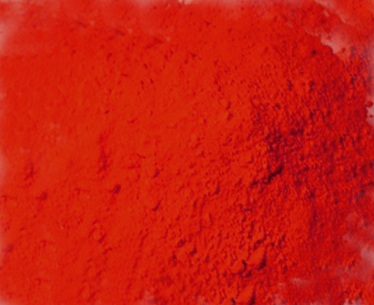Phthalocyanine blue is widely used in plastics due to its unique and outstanding properties
2025-04-24
In today's colorful plastic world, the presentation of color is a crucial link, and this cannot do without various pigments. Among them, phthalocyanine blue has stood out in the field of plastic masterbatches with its unique and outstanding performance, becoming a highly favored blue pigment.
Plastic masterbatch is an aggregate produced by uniformly loading an excessive amount of pigments or dyes onto resin. In the plastic production process, the selection of color masterbatches is a complex and diverse process, not a single model. It will be differentiated according to the different carriers. Common ones like polyethylene (PE), polypropylene (PP), acrylonitrile butadiene-styrene copolymer (ABS), etc. are all different types of carriers. At the same time, they are also classified based on their uses. For instance, there are processes like injection that require high precision and special physical properties, as well as blow molding that shapes plastic products of various forms. Different carriers and uses have significant differences in the requirements for pigment properties.
Among these requirements, the coloring power is the primary factor to be considered. The so-called coloring power, simply put, refers to the efficiency at which a pigment can produce the desired color. This indicator is of vital significance in actual production. Take phthalocyanine blue for example. It has high tinting strength. This characteristic means that under the same production conditions, less phthalocyanine blue is needed compared to other pigments with lower tinting strength. This is not merely a simple issue of quantity; it is directly related to the level of production costs. In large-scale plastic production processes, even the slightest difference in usage, when accumulated over a large number of products, can have a significant impact on costs. Therefore, the high tinting strength of phthalocyanine blue has an undeniable advantage in terms of cost control.
In addition to the coloring power, the heat resistance of the pigment is also of vital importance. During the processing of plastics, for instance, when plastic raw materials are processed into various plastic products through injection molding machines, a high-temperature environment is generated inside the machines. Moreover, during the use of plastic products, in some cases, they may also face the test of high temperatures, such as plastic products used near the heat dissipation components of electronic devices, or plastic products that frequently come into contact with high-temperature objects, etc. Under these high-temperature conditions, the stability of the pigment is facing a strict test. Phthalocyanine blue has excellent stability, which enables it to maintain outstanding color performance even in high-temperature environments. It will not experience color changes or fading due to high temperatures, thus ensuring the consistency and stability of the color of plastic products.
Mobility is another key consideration when choosing pigments. During the use of plastic products, we often encounter some problems. For instance, when one plastic product comes into contact with another, the color will shift, which is a manifestation of poor pigment migration. For ideal pigments, such as phthalocyanine blue, they should be able to prevent this color transfer phenomenon from occurring very well. This feature can ensure that plastic products remain aesthetically pleasing in various complex usage scenarios and will not be affected in appearance and usage value due to color transfer.
Weather resistance is also an important factor that cannot be ignored, especially for plastic products that need to be exposed outdoors for a long time. In outdoor environments, plastic products are affected by various factors such as direct sunlight, rain erosion, and temperature changes. Phthalocyanine blue has excellent lightfastness and weather resistance, which enables plastic products to maintain their bright color as before in various harsh outdoor environments, whether it is the scorching summer or the cold and damp winter, without fading or discoloration due to long-term exposure to wind and sun.
In addition, we also need to take into account the situation where plastic products may come into contact with various chemical substances during actual use. For instance, some plastic products may be used to store chemical reagents or come into contact with acidic or alkaline substances during use. This requires that the pigments must have good resistance to acids, alkalis and chemical stability. If the chemical stability of the pigment is poor, once it comes into contact with these chemical substances, a chemical reaction may occur, which can lead to color changes or damage to plastic products and other problems.
With the increasing emphasis on environmental protection in modern society, the importance of environmental friendliness in the plastic industry has also become increasingly prominent. In the production process of plastic products, avoiding the use of toxic pigments containing heavy metals has become a basic principle. Because pigments containing heavy metals, once they enter the environment, will cause serious pollution to soil, water sources, etc., and if ingested by the human body, they will also pose a threat to human health. Phthalocyanine blue has the characteristic of being non-toxic, which fully meets the environmental protection requirements of the modern plastic industry and conforms to this development trend.
In conclusion, phthalocyanine blue, with its bright color, high tinting strength, good dispersibility, excellent migration resistance, lightfastness, heat resistance, chemical stability, and non-toxicity and environmental friendliness, among other outstanding properties, fully meets the various requirements for pigment performance of plastic masterbatches under different carriers and applications, thus becoming the ideal choice for plastic masterbatches.




